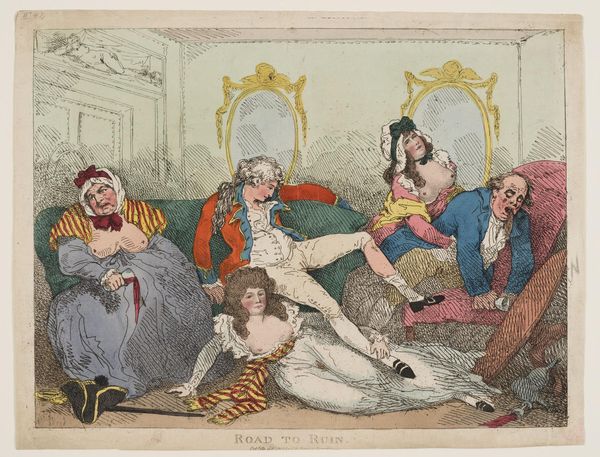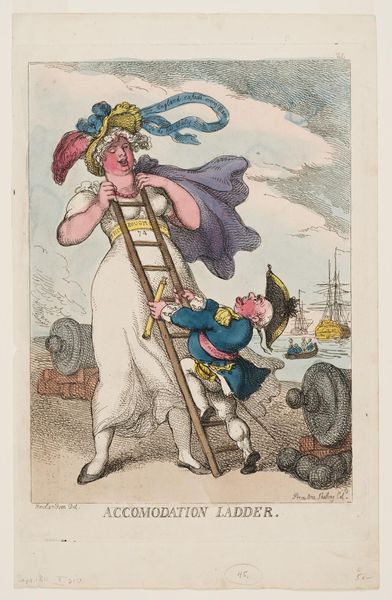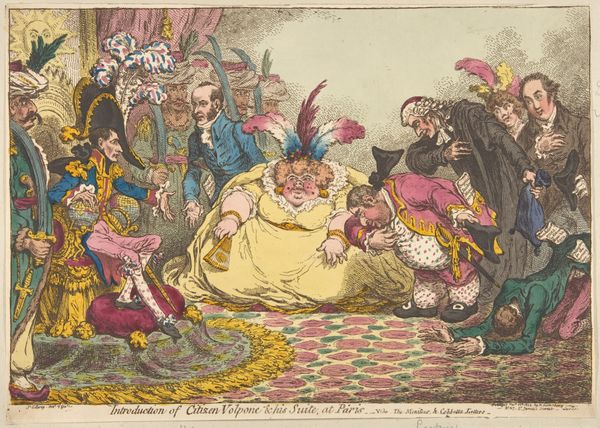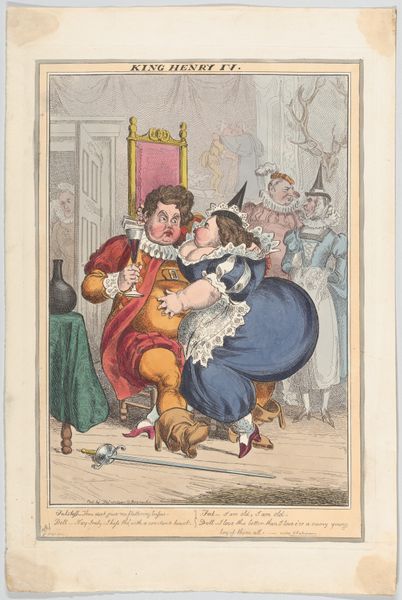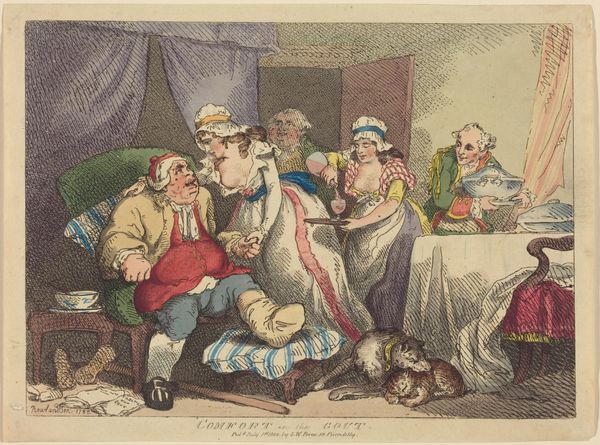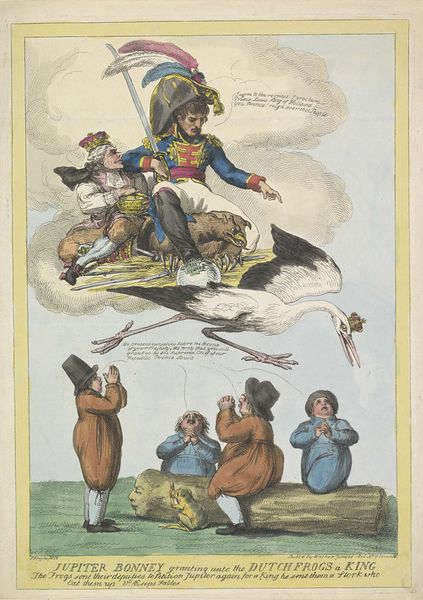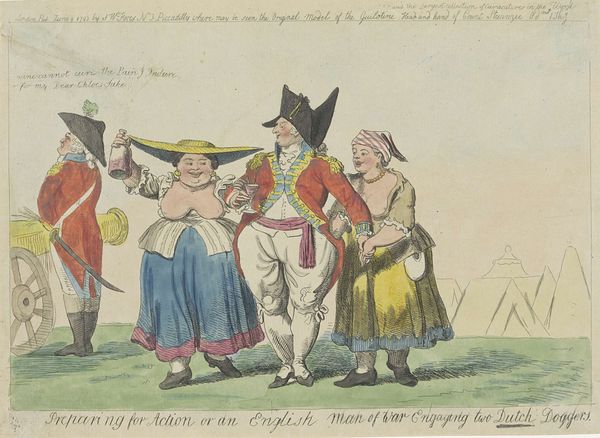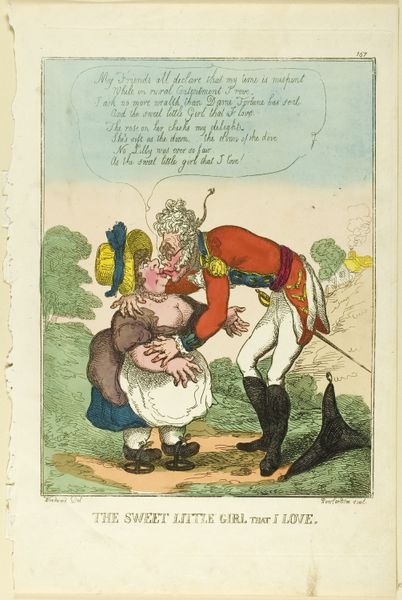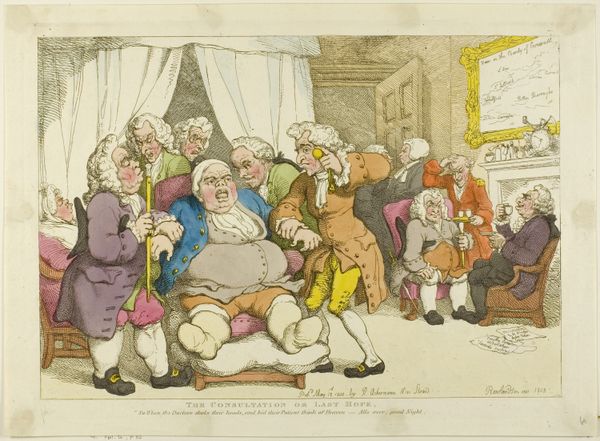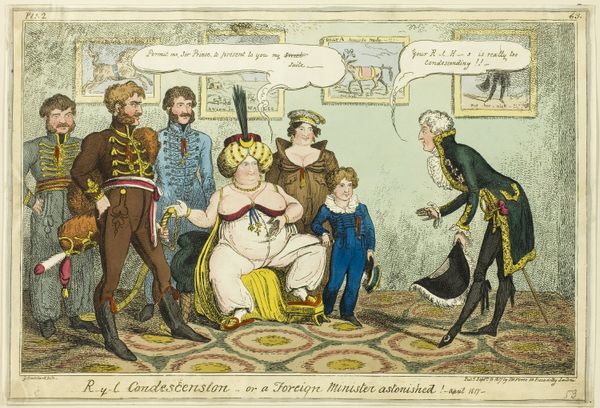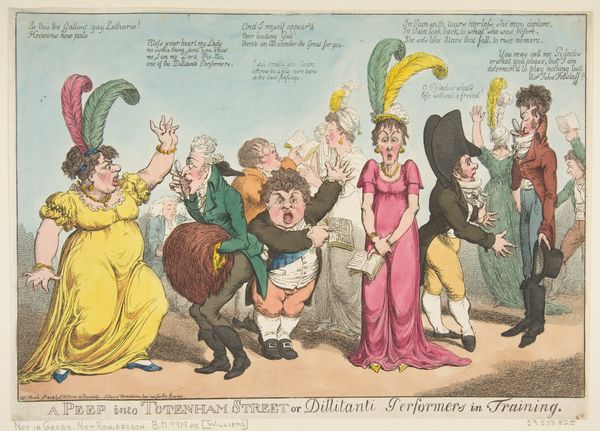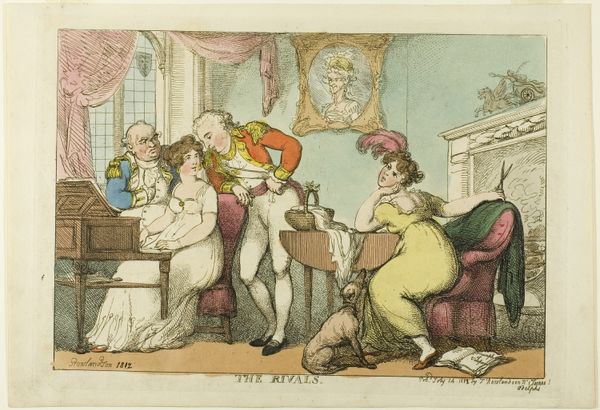
watercolor
#
caricature
#
watercolor
#
romanticism
#
genre-painting
Dimensions: height 400 mm, width 252 mm
Copyright: Rijks Museum: Open Domain
Curator: Before us, we have John Cawse's "The Opening of the Sluices, 1799," currently residing in the Rijksmuseum. It is a fascinating piece executed in watercolor. My initial response is it is reminiscent of a nightmare. The bodies, the colors... Editor: A nightmare indeed, or rather, a very pointed satirical critique of the time. Let's unpack this historically. Cawse created this as a political commentary, situating it within the context of the Anglo-Russian invasion of Holland in 1799. Curator: So those partially submerged figures, struggling in the water... they're not just random figures but representations of actual individuals and failed policy? I'm looking closer, and it is gruesome! And what’s the relationship to the frogs that are hopping around. Editor: Precisely. They signify the British and Russian forces drowning in Dutch waters, a consequence of the decision to flood the land as a defensive measure. And the corpulent women overlooking the scene? They satirize the authority figures complicit in this disaster, perhaps alluding to the corruption within the British monarchy and government. Their exaggerated physiques and condescending expressions highlight the indifference of those in power to the suffering of the common soldier. Also notice their proximity to frogs or toads which in art, has an association with corruption. Curator: It's quite effective in conveying that message, albeit brutally. I am especially interested in the caricatured features - the oversized hats, the almost cartoonish expressions of despair on the faces of those drowning. What I'm also trying to get to the core of is how is the gender of the characters relevant here? Editor: Gender definitely plays a role. The exaggerated femininity of the women—the corpulence, the ostentatious hats—contributes to the satire by suggesting a certain decadence and moral failing. There’s a clear intersection here in the understanding of that era. Curator: So it's a scathing indictment then. Editor: Absolutely, utilizing caricature and symbolism to expose the failures of leadership and the consequences of political ambition, a poignant commentary on the era's sociopolitical climate. It is more than just an artwork, it is a call for the reform of British power. Curator: Considering Cawse’s message within the painting's reception today... How do we avoid replicating the systems he criticizes in how we discuss it now? Editor: Well, hopefully by situating it with this sociopolitical lens and engaging with the art with consideration to the context that has produced it. That’s the first step toward recognizing those structures!
Comments
No comments
Be the first to comment and join the conversation on the ultimate creative platform.
